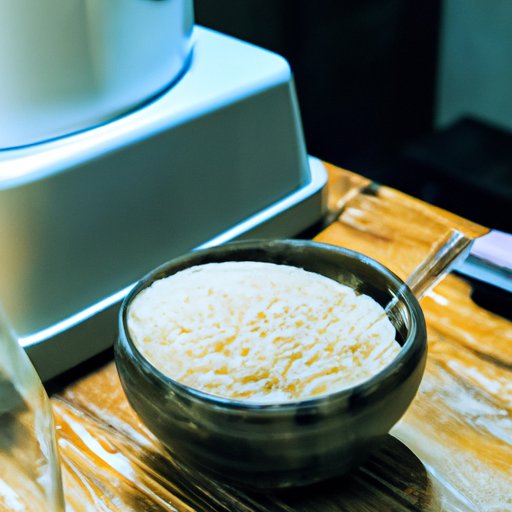Introduction
Sushi rice, also known as shari, is an indispensable ingredient in sushi, one of the most popular cuisines in the world. Making the perfect sushi rice requires dedication, patience, and above all, the right technique. In this article, we will guide you through the entire process of making sushi rice from scratch and provide you with tips on how to make sushi rice that is of high quality.
Step-by-Step Guide
To make sushi rice, start by rinsing the rice grains thoroughly in cold water. Soaking the rice for at least 30 minutes before cooking can help to remove any excess starch and enhance the texture of the rice. Once you’ve rinsed the rice grains, place them in a saucepan, and add water in a 1:1.2 ratio.
Bring the rice and water to a boil over medium to high heat and reduce the heat to low, cover the saucepan, and simmer for 15 minutes. Once the time is up, turn off the heat and let it sit, covered for another 10 minutes.
Ingredient Mastery
Sushi rice only requires a few basic ingredients: rice, water, sugar, and rice vinegar. However, there are additions that can take the sushi rice’s flavors to the next level. Incorporating sake and mirin into the seasoning mixture can offer depth and complexity to your sushi rice. Rice vinegar is a crucial ingredient whose use cannot be substituted since it helps in the fermentation process and offers a unique tangy flavor to the rice.
Tips and Techniques of Quality Sushi Rice
Getting the right texture, taste, and consistency of sushi rice can be challenging for beginners. However, by mastering simple tips and techniques, such as precise measurement of rice, correct water ratios, and soaking and rinsing the rice, you can create the perfect sushi rice every time.
Variations and Flavors
While the classic recipe of sushi rice uses a neutral flavor profile with sugar and rice vinegar, experimenting with different ingredients such as herbs and spices can create a multitude of unique flavors. You can mix sushi rice with herbs like coriander or basil to lend it a fresh and earthy flavor. Alternating the vinegar used or using different types of rice can give a new twist to the classic sushi dish.
Comparison to Other Rice
Sushi rice is short-grain rice that contains more starch compared to other types of rice. Therefore, it gives you the ideal sticky texture needed to hold your sushi rolls together. It is imperative to choose sushi rice over other types of rice such as basmati or jasmine as they lack this stickiness necessary for sushi rolls.
Time and Resource Savers
Investing in a rice cooker can make the sushi rice-making process faster and easier. Rice cookers work by cooking the rice at the right temperature and level of moisture required for sushi rice at the touch of a button, making the process more convenient. Additionally, pre-made sushi seasoning mixes can save time and provide a perfectly balanced seasoning mixture.
The Conservation of Tradition
Inculcating and upholding tradition is a significant part of upholding the authenticity of sushi rice. Historically, the specific techniques and methods of sushi rice-making have been passed down through generations and are considered a sacred process. It is essential to understand and practice these methods to ensure the quality and tradition of sushi rice-making are maintained.
Conclusion
In conclusion, making sushi rice takes practice, but it is worth the hard work to achieve the optimal texture and flavor. By following our simple step-by-step guide, ingredient mastery tips, and techniques, you can create the perfect sushi rice that meets your individual taste and preference. So grab your ingredients, roll up your sleeves, and get started on making the perfect sushi rice today.
